We are as a team with four members intending to design an augmented reality oriented smart glass which shall contain a CMOS camera, wireless communication and transparent screen. The algorithm below as flow diagram.

simulate this circuit – Schematic created using CircuitLab
The main problem we are having is to find a transparent display fitted into project (2"-2.5 is reasonable for smart glass.) My question is what else can be done instead of transparent display? Are there really fitted displays that we missed?